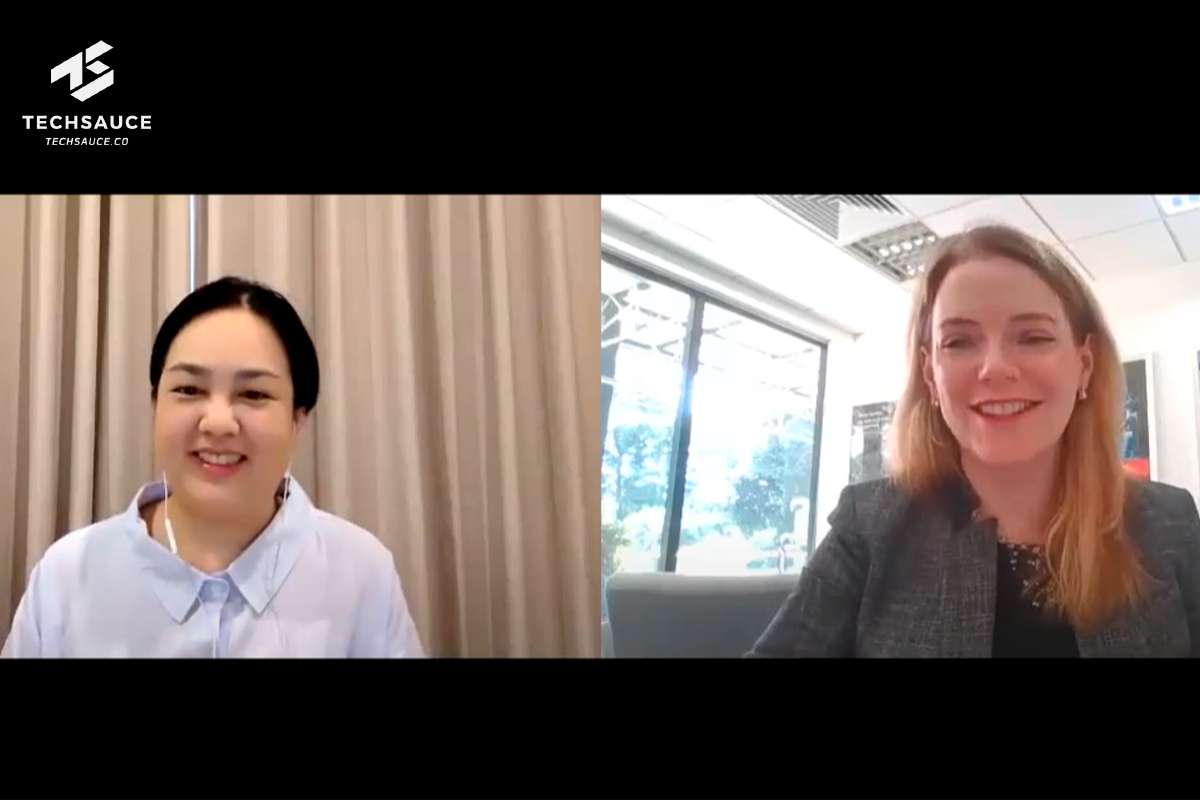Outlasting the Crypto Winter with Stephen Richardson, Head of APAC and SVP of Financial Markets at Fireblocks
It has definitely been a whirlwind year for cryptocurrency. Despite the collapse of a central crypto exchange platform FTX, there's still great potential for this field given the expectations for Web3, though the question remains - how can players in the industry survive the crypto winter and thrive in the future of digital assets?

Today at Techsauce Global Podcast we discussed with Stephen Richardson, Head of APAC and SVP of Financial Markets at Fireblocks about the latest state of the digital asset space and its outlook for the future.
About Stephen Richardson and Fireblocks
Stephen Richardson is Head of APAC and Senior Vice President of Financial Markets at Fireblocks, an easy-to-use platform to create new blockchain-based products and manage day-to-day digital asset operations. Prior to Fireblocks, he was Senior Manager within the Financial Services practice of Accenture Strategy and Head of Strategy at Noble Markets. He also completed various stints with BNP Paribas, Goldman Sachs and Teach for America.
The Crypto Winter
While we might have witnessed somewhat of a sudden U-turn or a slowdown in the world of tech and digital asset investment, this is not the first winter that has hit the digital asset world. Previous winters have led to the validity of blockchain technology being ready for mass adoption being questioned, this particular winter, however, hit differently since a lot of it was self-inflicted in terms of corporate governance and risk management, according to Richardson.
Has the collapse of FTX impacted the Industry?
The recent failure of FTX, a major cryptocurrency exchange, unfortunately marks one of the most serious problems in the crypto and digital asset world - questioning the health of the industry and specifically, the credibility of centralized exchange entities, and contributing to this lasting crypto winter.
For Richardson, the incident has not only drawn attention to the importance of using the right technology to mitigate risks among many centralized entities (including major exchanges), but also to the infrastructure of the whole industry.
It is also something that Fireblocks has been focusing on as a digital asset custody, transfer and settlement technology provider, he added - working with customers and partners to mitigate counterparty risks. This includes utilizing the latest security technologies - such as MPC-CMP, Intel SGX, a well-structured workflow authorisation, and an institutional asset transfer network - in a battle-tested, multi-layered implementation..
“As a self-custodial platform providing technology to different institutions to be able to hold their own assets and manage that, it becomes even more important to relay the importance of this type of technology and mitigate risks in centralized entities. And that's something we're paying a lot of attention to.”
Regarding the industry and the incident, the space is still relatively resilient. Despite market volatility, traditional financial institutions still see an opportunity to gain a foothold in the digital assets world, which Richardson added “sounds rather antithetical.”
“The space is relatively resilient. Banks and financial institutions now start to see a real opportunity to gain a foothold. They have what I think a lot of digital asset native companies lost, which is trust. You trust Siam Commercial Bank, you trust DBS, you trust JP Morgan, you trust Bank of America. The reason you trust them is they have credit from central banks. They can go to the central bank, get credit and you anticipate that they won't fail because central banks won't allow those banks to fail.”
The Winter has sharpened the Digital-natives
Richardson,citing Chainalysis, observes that generally resilient infrastructure players and businesses with strong business models are still able to raise capital, with investments still pouring in from large VC firms in the space. What happened is that the bearish environment has forced players to better manage their resources and find the right product-market fit.
“The enhanced due diligence and the kind of scrutiny VC firms and other players are exercising in the space to ensure that their investments are secure and that they're able to return capital back to their investors, I think, is a good thing.”
From an entrepreneurial perspective, the third ‘Crypto Winter’ has ensured market players exercise more prudence and conduct due diligence around how and where their capital is allocated within the digital asset ecosystem.
Mitigating future Crypto-Risks
Before multisig wallets entered the mainstream, cryptocurrencies were generally stored using a single private key. Whoever had access to the private key itself was able to access the funds associated with that key. Multisig added an additional layer of security to the equation by creating wallets that require the signature from multiple keys.
While multisig offers potential solutions to some of the problems of single-signature wallets (e.g. a single point of failure), it also introduces new issues. This is because when multisig was first introduced in 2012, the blockchain space was different in a variety of ways. For example, bitcoin was the only cryptocurrency, so the concept of creating a security technology that would work across multiple blockchains was irrelevant.
Enter multi-party computation (or MPC) which is the next generation of private key security. MPC is a cryptographic technology that “fortifies the castle”, according to Richardson, which allows multiple parties to each hold secret information and then solve a problem that requires the input of all these secrets in a decentralized way, without ever sharing the secret information with one another.
“You have a lot of gold in a castle, castle up on a mountain, you put a moat around the castle, you put some snakes and some crocodiles in the water, a very high wall, [and] create lots of different adverse events in order [to make it difficult] for someone to try to get to the valuable resource.”
Fireblocks developed the MPC-CMP protocol that removes the concept of a single private key; such a key is never gathered as a whole, neither during the first creation of the wallet nor during the actual signature. MPC-CMP guarantees that there is never a single point of compromise of the private key.
What’s to expect from the Digital Asset Landscape after it’s Winter?
The crypto winter may subside in the year ahead and Richardson sees the space resurging with lots of intriguing, original products still being developed and many unique projects still being explored in Web3.
Among the major trends that will likely happen is that large financial institutions will continue to move into the digital asset space. Additionally, there will be new entrants and upstarts with lower expectations for delivery that come into the market and subsequently disrupt it.
Richardson also sees several more shifts happening including:
More secure and regulated Digital space
As digital assets proliferate more into everyone's life, more regulations will help mitigate future risks of scams. At the moment various Web3 firms have been more proactive in educating their customers on how to best safeguard their digital assets.
Tokenization of real assets and fiat currencies
In Thailand, there has been an exploration of retail CBDC by the Central Bank, while in Singapore, Project Guardian saw the completion of transactions involving the buying and selling of tokenized Singapore Government Securities, Singapore dollars, Japanese government bonds and Japanese yen. Major banks and asset managers globally have also launched, or are preparing to launch tokenized assets like carbon credits, ESG bonds, and private equity funds.
“How delivery versus payment (DvP) settlement will happen in these markets, with the tokenization of these assets, is an exciting thing [to watch] moving into 2023.”
Restructuring of market and settlement model
The entry of traditional financial institutions into the digital assets space will also call for new financial and regulatory models. Currently, large centralized institutions are operating as both custodians and exchange venues for digital assets.
Fidelity, a trusted financial services company in the US, has started to offer a commission-free crypto trading product for retail investors. BNY Mellon also launched its custodial offering and integrated Fireblocks’ battle-tested technology - both are exploring an area that was typically a crypto-native domain.
Richardson pointed out that traditional financial institutions will continue to devote resources to the digital assets space, which suggests further developments to come in 2023.
Toward decentralized application
In order for DeFi to go mainstream, the DeFi space needs to tackle several areas seriously, including security vulnerabilities, as DeFi platforms continue to be ripe targets for hackers due to their unprecedented scale of growth combined with insufficient security protocols. 2022 was the “biggest year ever” for crypto hacks (i.e. $3 billion stolen from victims). If DeFi is to succeed, security will absolutely need to be a priority as opposed to an afterthought.
“There'll be a lot more concentrated attention on really shoring up the risk around smart contracts and leveraging these different DeFi applications to basically offer different services in the market, without [taking on] the risks that we've seen from centralized institutions. That will be another really interesting thing to watch in 2023.”
Towards the end of the podcast, Richardson shared some key takeaways for startups, entrepreneurs, and companies operating, or looking to operate, within the digital assets space. Firstly, to think about and focus on the product-market fit, and secondly, to find the right partner and figure out how to bring the product to market quickly and demonstrate the real-world utility of the product that you’ve built.
This is a Techsauce Global Podcast Article, For more insight, listen to our podcast here.
ลงทะเบียนเข้าสู่ระบบ เพื่ออ่านบทความฟรีไม่จำกัด











